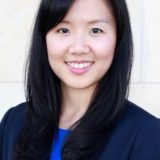 By Tracy Hu, 4th-year medical student, UTMB, Family Medicine
By Tracy Hu, 4th-year medical student, UTMB, Family Medicine
The fourth year of medical school is a crucial time for exploring different dimensions of one’s chosen field and gaining skills in preparation for residency. A case in point is my experience taking the Complementary and Integrative Medicine elective (CIM) at the University of Texas Medical Branch (UTMB). A four-week course, CIM exposes the learner to complementary and alternative medicine such as acupuncture and herbal remedies, contextualizing them within conventional allopathic medicine. Nutrition, exercise, and lifestyle interventions are also central to this approach to care. These topics, often skimmed over in the required medical education curriculum, are cornerstones to maintaining health and well-being. With my aspirations in Family Medicine, I know that mastery of these subjects is essential to helping my future patients.
Integrative medicine holds a holistic, healing-oriented philosophy that takes into account the patient’s unique combination and interaction of mind, body, spirit, and community. Integrative medicine emphasizes the patient-physician relationship, recognizing the importance of compassion and connection in facilitating healing. It aims to offer patients the least invasive, least toxic, and most affordable options drawn from both allopathic and complementary modalities based on the best available evidence.1 In alignment with the spirit of integrative medicine, CIM consists of activities designed to create a well-rounded, holistic experience offering opportunities to broaden clinical knowledge, engage with patients in a non-medical setting, and explore non-allopathic healing modalities.
The main textbook resource for CIM was David Rakel’s Integrative Medicine. While working with clinical preceptors trained in integrative medicine, I was able to see textbook knowledge come alive in practice. For example, prior to this elective, I was accustomed to selective serotonin receptor inhibitors as the mainstay treatment for anxiety and depression. On occasion, I saw lifestyle factors briefly addressed, but almost always the physician offered medication and the patient accepted. During this elective, however, I saw my preceptor address anxiety and depression with open-ended questions about diet, exercise, stress at work, and even spirituality. She then provided extensive counseling on sleep hygiene and numerous non-pharmacological options such as mind-body therapies, supplements, and botanicals in an accessible way that not only empowered the patient but also fostered the patient-physician relationship.

Another component of CIM was spending time at the Osher Lifelong Learning Institute (OLLI) in Galveston. OLLI is a UTMB program that promotes healthy living, life-long learning, physically and mentally challenging activities, and social connections in individuals aged fifty-five and up by offering college-level courses and fitness classes taught by community professionals. Chatting with OLLI members, I caught a glimpse of their unique life circumstances that reveal what health means to them. One particularly memorable conversation led me to visit an OLLI member at her sister’s farm, home to over 250 rabbits. Seeing her lean on her walker, slowly making her way among the endless rows of cages, all the while animatedly naming interesting tidbits about different rabbit breeds, I realized that health to her means being able to spend time with her beloved animals and sharing that love with others.
Regarding exposure to complementary and integrative therapeutic interventions, I find acupuncture to be the most impressive. Acupuncture has been shown to be effective in treating a multitude of conditions, including headaches, low back pain, and nausea.1 Many patients coming in for treatment enthusiastically shared the impact of acupuncture on their ailments and their lives. Of course, I also met patients resistant to trying this modality, but that only demonstrated the beauty of integrative medicine—we collaborate with patients to find what works for them from a large array of therapeutic options.
Having an interest in integrative medicine prior to CIM, I am now even more excited to pursue this approach to healing. Moreover, I am encouraged to see integrative medicine being incorporated into current Family Medicine residency training. On my interview trail, I have visited numerous programs that are creating more holistic models of care. Some programs have an Integrative Medicine track while others are optimizing the patient-centered medical home model. Still others train all residents in integrative medicine principles while offering advanced training opportunities in acupuncture. There are even programs promoting a holistic model in treating underserved patients and not branding it as “integrative” or “holistic.” They just call what they do “medicine.”
I am so heartened to share this wise pearl from Dr. David Rakel: “The philosophy of health based on a balance of mind, body, and spirit is not new or unique to integrative medicine…the integrative medicine of today will then simply be the good medicine of the future.”
References
- Rakel, David. Integrative Medicine. Elsevier, 2018.


